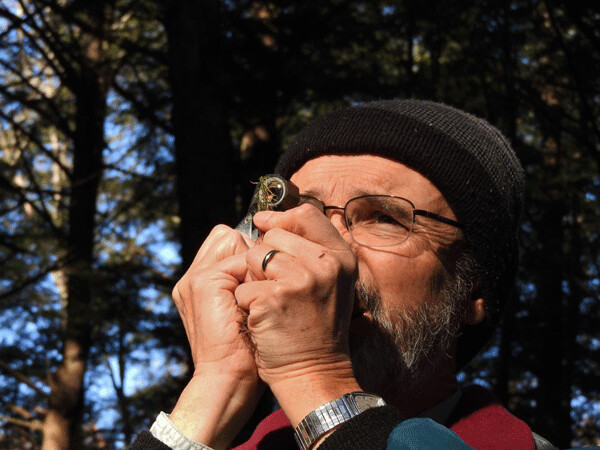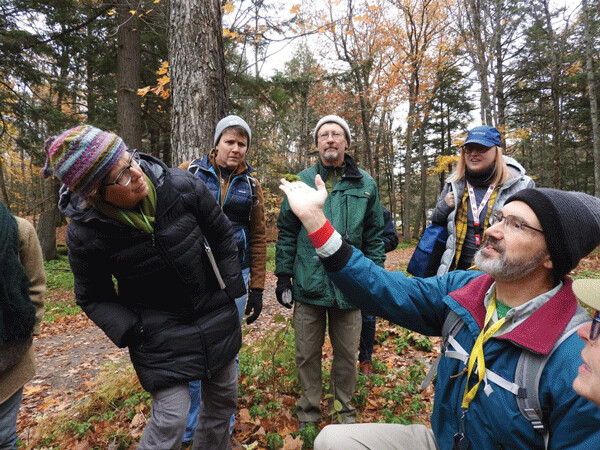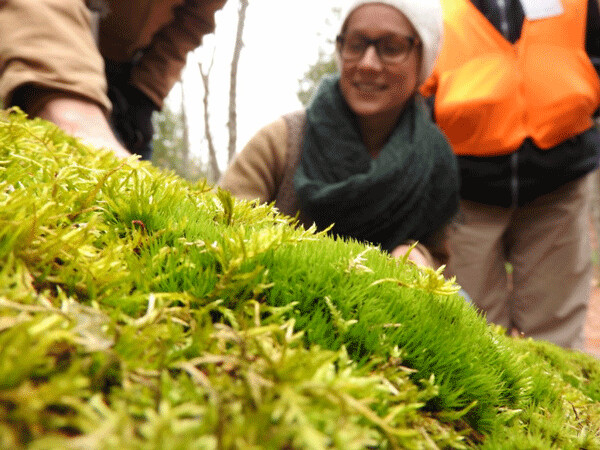News & Articles
Browse all content by date.

“Let’s go look for moss,” invited Joe Rohrer, a retired botany professor from University of Wisconsin - Eau Claire. So our eager group of amateur naturalists donned puffy coats and stocking hats before leaving the cozy warmth of the Gatehouse at Forest Lodge.
The moss was already out there. Unlike most of our other plants, moss doesn’t change all that much as it goes dormant for the winter. Bare twigs etched patterns across the sky. The dead stems of flowers and weeds melted into the sweet-smelling drifts of maple leaves. Big plants must make big changes as winter approaches. Moss simply dries or hydrates or freezes or thaws as the weather dictates. Simply, I say, but truly the moss has an efficient system for turning off its essential functions that allow it to avoid and repair cell damage.

On this first afternoon of a 3-day workshop about moss, our goal was simply to tour the property and start seeing moss. Forest Lodge was the summer estate of Mary Griggs Burke, founder of the Cable Natural History Museum. Her grandfather purchased the land from the logging barons who had just clear-cut it in the late 1800s. Ever since then, the shade under hemlock-hardwood forest has been deepening. When Mrs. Burke passed away in 2012, her 800+ acres of forest on the south shore of Lake Namakagon transferred into the care of the USDA Forest Service. Northland College manages the estate for educational programming. Our education began immediately. The vibrant green cushion of moss on a low, rounded rock in Mrs. Burke’s overgrown Japanese garden pulled us toward it like a magnet. From five feet up, the carpet looked uniform. Then Joe knelt down. Sarah crouched in. Elizabeth leaned over. We began to see.

By leaning in, we were able to discern slight variations in color and texture. A patchwork of mosses came into focus. (Here’s a grammar note: when talking about moss in general, or a group of the same species of moss, the plural is just moss. But when you’re talking about more than one type of moss, the plural become mosses.) Two…three...four species materialized where previously we’d just seen green.
Then Joe extricated a little string from the cushion and held it out to us. The creeping stem lined with tiny leaves branched several times at wide angles. “This is an example of a pleurocarp moss,” he explained, “They often form densely woven mats.” Then, probing into a different section of rock, he held up a single stalk bristling with spikey leaves. “In contrast, this acrocarp moss is very upright, and if there are branches, they run parallel to each other. They tend to look more like a tiny forest.” Being able to tell the difference between these two growth forms is the first step in identifying mosses using Joe’s field guide: Common Mosses of the Northeast and Appalachians. A few years ago, Joe’s old college buddy, Karl McKnight, asked Joe to help with the book, and they came up with a pretty slick system for identifying 200 common species of moss—184 of which occur in Wisconsin.
Because mosses are mostly known by their scientific names, the book team made up memorable and descriptive common names to help us regular folks. For instance, we all oohed and aahed when Joe pointed out a patch of “windswept broom moss.”
The arched tips of its long leaves were bent all to the same side, and even on the calm day it resembled a fairy-sized field of grasses blowing in the breeze. The second step in identifying a moss using Joe’s guide is looking at the shape of an individual leaf. For this, we moved indoors, and used a digital microscope to project fragments of mosses on the big screen, and hand lenses to augment our own eyes. When viewed close-up, in good light, moss leaves glow. The hairlike, lance-shaped, ovate, tongue-shaped or sickle-shaped leaves are just one cell thick, allowing sunlight to pass through, and water to come and go.
Some moss leaves do have a midrib that is a few cells thick, and its presence or absence is the third main feature in Joe’s ID key.
After determining those three characters, the key directs you to a section of the species pages with mosses that meet the criteria. There are few enough options that it’s not an onerous task to flip through the photos and sketches for each species and make a visual match of what you’re trying to identify. Or you could flip to the more technical dichotomous keys in the back of the book, which provide a more organized system for identification.
With hand lenses held close, we dove into the challenge of moss identification. I was successful with some, and confused by others, and I loved every minute of looking. “…the already gorgeous world becomes even more beautiful the closer you look.” – Robin Wall Kimmerer, Gathering Moss
Emily’s second book, Natural Connections: Dreaming of an Elfin Skimmer, is now available to purchase at www.cablemuseum.org/books and at your local independent bookstore, too.
For more than 50 years, the Cable Natural History Museum has served to connect you to the Northwoods. Come visit us in Cable, WI! Our new Curiosity Center kids’ exhibit and Pollinator Power annual exhibit are now open! Call us at 715-798-3890 or email emily@cablemuseum.org.
| Tweet |


